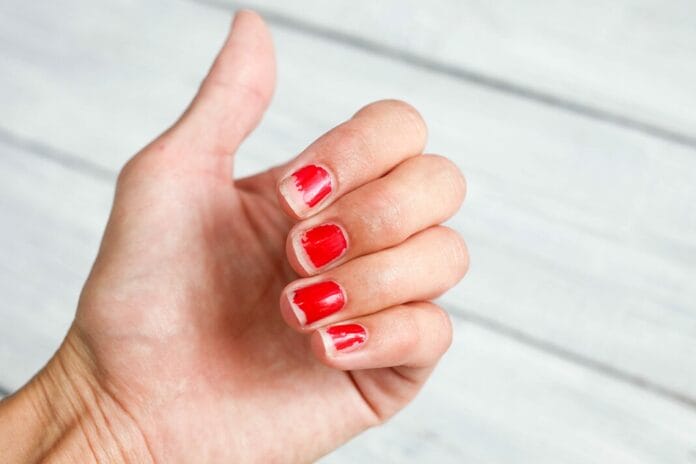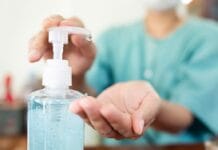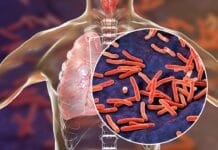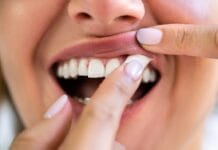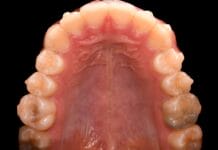Maintaining optimal hygiene practices extends beyond the oral cavity and into all aspects of personal care, including fingernail hygiene. Fingernails can serve as a hidden reservoir for bacteria, fungi, and viruses, potentially posing a risk to patients and practitioners.1,2 Given the close contact dental professionals have with patients’ mouths and the need for sterile environments, proper nail hygiene, as a subset of hand hygiene, is an essential yet often overlooked aspect of infection control.2
Hand Hygiene
Hand hygiene is part of a list of standard precautions outlined by the Centers for Disease Control and Prevention (CDC) as the minimum infection prevention practices that apply to all patient care. Other standard precautions include using personal protective equipment (PPE), respiratory/cough etiquette, sharps safety, safe injection practices, sterile instruments and devices, and clean and disinfected environmental surfaces.3
Handwashing practices began in patient care settings in the early 19th century. Contaminated hands of health care providers are a well-documented primary source of pathogenic spread.4 The CDC states that hand hygiene is the single most important practice in reducing the transmission of infection.3
The chain of transmission of pathogens from one patient to another via the provider’s hands happens in a few short steps:1
- Organisms are present on the patient’s skin or have been shed to inanimate objects immediately surrounding the patient.
- Organisms transfer to the hands of the provider.
- Hand washing, hand antisepsis, or protective barriers used by the provider are inadequate.
- The provider’s contaminated hand or instrument directly contacts another patient.
Dental health care provider’s should wash their hands:3,5
- Anytime they treat a patient, both before and after
- Before donning gloves and immediately after gloves are removed
- Anytime bare hands have touched instruments, materials, or equipment likely to be contaminated by blood, saliva, or respiratory secretions
- Anytime gloves need to be changed due to being torn, cut, or punctured
- Anytime hands are visibly soiled
- Before leaving the dental operatory
Hand hygiene for routine dental examinations and nonsurgical procedures uses water and plain or antimicrobial soap specific to health care settings. Rubbing hands with alcohol-based sanitizer is sufficient at other times. Hand hygiene is always the final step after removing and disposing of PPE.3,5
Hand hygiene training should stress keeping hands away from the face, limiting surfaces touched, removing PPE when leaving work areas, and performing hand hygiene.3
Fingernails and Pathogens
Fingernails function by protecting the digits and contributing to tactile sensation and the manipulation of objects.6 Numerous studies have documented that subungual areas of the nail and artificial nails harbor high concentrations of bacteria and yeasts even after careful handwashing.1
Fingernails have been found to harbor hepatitis B and C, human papillomavirus (HPV), and gram-positive cocci, including Staphylococcus aureus, Streptococcus mitis, and Enterococcus faecalis. Gram-negative bacilli, including Escherichia coli, Klebsiella, and Citrobacter freundii, can also be found on and around the nail bed.2
Cross-contamination and infection may also result from improper infection control practices in nail salons and improper cleaning of personal hygiene tools at home.2,7
Though there is significant knowledge of the importance of hand hygiene in the health care setting, the relationship between natural nails, nail polish, artificial nails, ultraviolet cured gel nail products, and the likelihood of colonization of pathogenic microorganisms is not fully understood.8 Given the variety of pathogens found on fingernails, it is important to consider how factors such as nail length, polish, and artificial nails may influence the colonization and spread of those microorganisms.
Nail Length
Long nails, sharp tips, and decorative art increase the risk of glove tears. Accelerated bacterial growth is detected in nails longer than 2 mm, and nails longer than 3 mm show a higher likelihood of carrying gram-negative Pseudomonas aeruginosa.9
One study found that clinicians with a fingernail length over 3 mm had a one in six chance of carrying P. aeruginosa compared to a one in 80 chance for clinicians with shorter fingernails.10
Nail Polish
The number of pathogenic organisms on an intact coat of nail polish is similar to that of unpolished bare nails. However, damaged polish has the potential to act as a source of microbial growth, as adequate handwashing is more challenging to achieve.2
It has been found that 62% of natural nails with polish show gram-negative bacterial contamination compared to 92% of artificial nails.10
Artificial Nails
Types of artificial nails include overlays, acrylics, wraps, gels, nail art or jewelry, tips, silks, fiberglass, or bonding.10 Nail art encompasses long artificial nails or attaching beads or jewelry to natural or artificial nails. An online survey of 1000 registered dental hygienists in South Korea found that 66.5% of those surveyed had worked with nail art applied.9
Artificial nails carry greater counts and more species of microbes than bare nails and inhibit thorough hand sanitization techniques.2 Artificial nails can lift at the edges, providing an area underneath to shelter microorganisms from eradication by hand washing.7
Acrylic monomers of the nails can cause trauma to the perionychium (tissue surrounding the sides and root of the nail) and allergic contact dermatitis, providing a route of entry for microorganisms on the hands and fingers. Acrylic nails allow increased hydration because of the high permeability of the acrylic monomers, providing an ideal environment for the growth of bacteria and fungi.7
One study found the percentage of recovery of gram-negative bacteria from artificial nails was 35% compared to 5% in bare nails. A further study found that colonization increases over time from 21% on day one to 71% by day 15 of wear.10
Kennedy et al. surveyed 147 NICU nurses and found that 61% believed artificial fingernails could play a role in health care-acquired infections. However, over 25% responded they would not voluntarily remove artificial nails or cut long nails if recommended.7
Pratt et al. contend that clinical staff should not wear artificial nails due to findings that most microbes on the hands are found on and around the fingernails.10
Gel Nails
Like acrylic nails, gel nails are associated with higher numbers and more species of microbes than bare nails. This type of artificial nail is cured with an ultraviolet light and is unlikely to chip, but physical gaps form as the nail grows out.2
A 2018 study focused on 88 health care workers. Some non-dominant hand fingernails were left bare, while others were painted separately with standard and gel nail polish. Cultures were collected at one, seven, and 14 days of wear before and after hand hygiene with alcohol gel. Mean colony forming units (CFUs) increased over time for all nail types. Still, a reduction in bacterial burden after hand hygiene with alcohol gel was only observed in bare and standard nail polish, not gel polish.8
The possibility of gel nails being more difficult to clean with alcohol hand gel should be further investigated.8
Fingernail Hygiene Guidelines
Based on the substantial numbers of potential pathogens in subungual spaces, even after careful handwashing, the World Health Organization (WHO) states that health care professionals should keep their nails short and avoid wearing artificial nails when having direct contact with patients.11
Further, the WHO recommends each health care facility develop policies on the wearing of artificial fingernails or nail polish by health care professionals. Policies should take into account the risks of transmission of infection to patients and health care professionals.11
The CDC Guidelines for Infection Control in Dental Health Care Settings state that the majority of flora on the hands are found around the fingernails, so keeping fingernails short is key. Fingernails should be kept short enough to allow a dental professional to thoroughly clean underneath them and prevent glove tears. Long artificial or natural nails can make donning gloves more difficult and can cause them to tear more readily.12
Further, the CDC guidelines state that the carriage of gram-negative organisms both before and after handwashing has been determined to be greater among wearers of artificial nails than among non-wearers. Additionally, freshly applied nail polish on natural nails does not increase the microbial load if fingernails are kept short, but chipped polish can harbor added bacteria.12
However, defined nail length (either natural or artificial), wearing nail polish, and the safety of artificial nails with specific guidelines are not clearly outlined.12 Without evidence-based guidelines from national organizations such as the CDC on applying nail products in dental health settings, the issue remains controversial.8,9
In Closing
Maintaining optimal nail hygiene is a crucial but often overlooked component of infection control in health care settings, especially for dental professionals. The proximity to patients’ mouths and the potential for pathogen transfer underscores the importance of proper nail care and hand hygiene. While the relationship between artificial nails, nail art, and the risk of microbial colonization warrants more study, it is clear that long nails, artificial nails, and nail polish can serve as reservoirs for harmful bacteria, increasing the likelihood of infections.
With limited guidelines on nail hygiene, dental professionals may want to err on the side of caution by keeping nails short, avoiding artificial nails, and adhering to stringent hand hygiene protocols. Doing so can significantly reduce the risk of cross-contamination and protect patients and practitioners from preventable health care-associated infections.
Before you leave, check out the Today’s RDH self-study CE courses. All courses are peer-reviewed and non-sponsored to focus solely on high-quality education. Click here now.
Listen to the Today’s RDH Dental Hygiene Podcast Below:
References
- Suhaim, K.S., Irshana, R., Shetty, M. A Review on Guidelines for Hand Hygiene in Dental Practice. IOSR Journal of Dental and Medical Sciences. 2014; 13(11): 75-79. https://www.iosrjournals.org/iosr-jdms/papers/Vol13-issue11/Version-7/Q0131177579.pdf
- Wu, A.G., Lipner, S.R. A Potential Hidden Reservoir: The Role of Nail Hygiene in Preventing Transmission of COVID-19. Journal of the American Academy of Dermatology. 2020; 83(3): e245-e246. https://pmc.ncbi.nlm.nih.gov/articles/PMC7263222/
- Standard Precautions. (2024, May 15). Centers for Disease Control and Prevention. https://www.cdc.gov/dental-infection-control/hcp/summary/standard-precautions.html
- Toney-Butler, T.J., Gasner, A., Carver, N. (2023, July 31). Hand Hygiene. StatPearls. https://www.ncbi.nlm.nih.gov/books/NBK470254/
- Hand Hygiene. (n.d.). American Dental Association. https://www.ada.org/resources/practice/legal-and-regulatory/05_hand-hygiene
- Johnson, C., Sinkler, M.A., Schmieder, G.J. (2023, June 5). Anatomy, Shoulder and Upper Limb, Nails. StatPearls. https://www.ncbi.nlm.nih.gov/books/NBK534769/
- White, J. Jewelry and Artificial Fingernails in the Health Care Environment: Infection Risk or Urban Legend? Clinical Microbiology Newsletter. 2013; 35(8): 61-67. https://doi.org/10.1016/j.clinmicnews.2013.03.003
- Hewlett, A.L., Hohenberger, H., Murphy, C.N., et al. Evaluation of the Bacterial Burden of Gel Nails, Standard Nail Polish, and Natural Nails on the Hands of Health Care Workers. American Journal of Infection Control. 2018; 46(12): 1356-1359. doi:10.1016/j.ajic.2018.05.022
- Jeong, J.-H., Mun, S.-J., Yoo, J.-H., Noh, H.-J. Relationship Between Hand Hygiene Beliefs and Nail Hygiene Behaviors Among Dental Workers in South Korea. Journal of Korean Society of Dental Hygiene. 2019; 19(3): 363-373. https://doi.org/10.13065/jksdh.20190034
- Ward, D.J. Hand Adornment and Infection Control. British Journal of Nursing. 2007; 16(11): 654-656. https://pubmed.ncbi.nlm.nih.gov/17577182/
- WHO Guidelines on Hand Hygiene in Health Care. (2009, January 15). World Health Organization. https://iris.who.int/bitstream/handle/10665/44102/9789241597906_eng.pdf
- Kohn, W.G., Collins, A.S., Cleveland, J.L., et al. Guidelines for Infection Control in Dental Health-Care Settings – 2003 [MMWR Report No. 17]. Centers for Disease Control and Prevention. 2003; 52: No. RR-17. https://www.cdc.gov/mmwr/pdf/rr/rr5217.pdf

